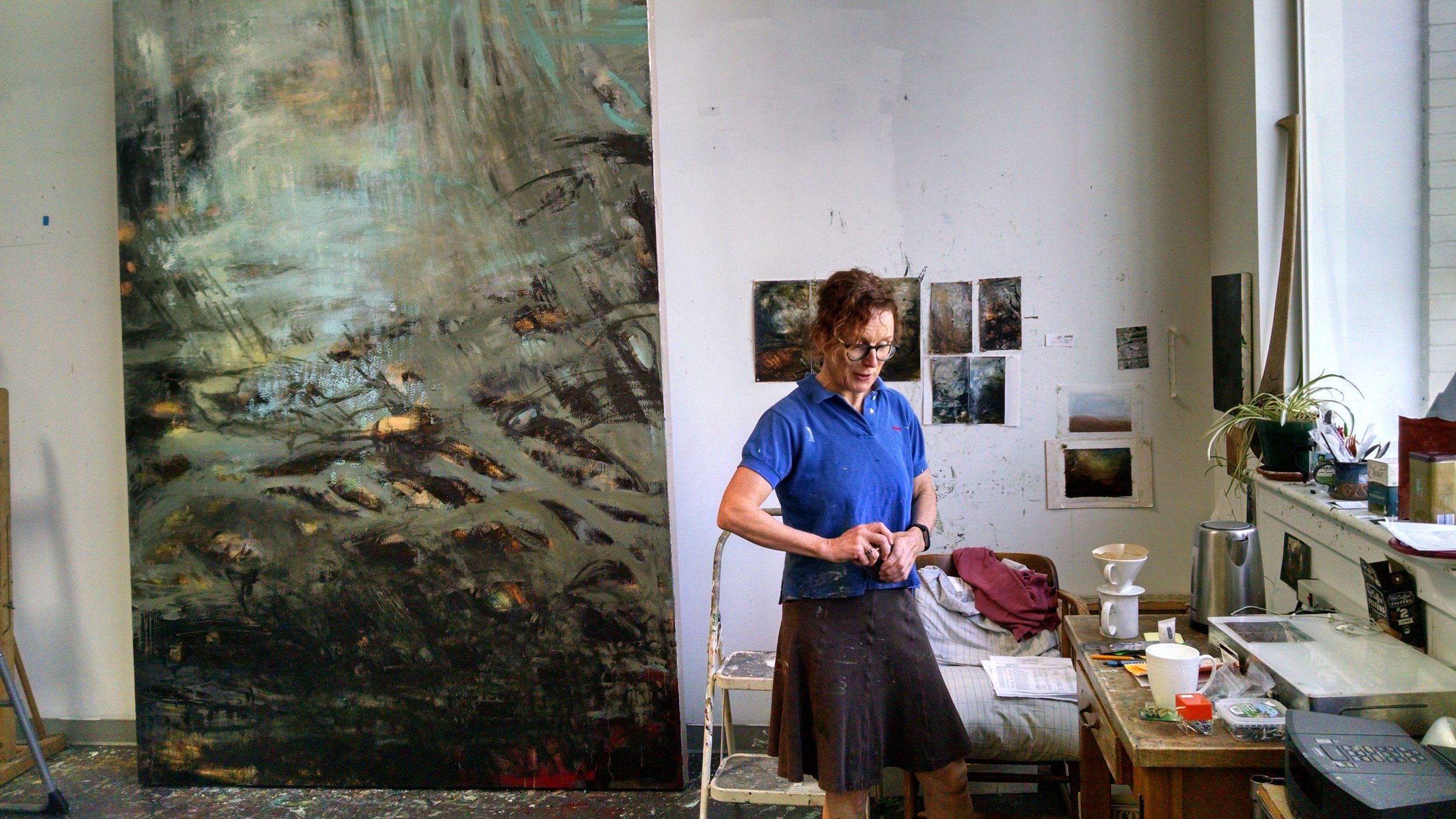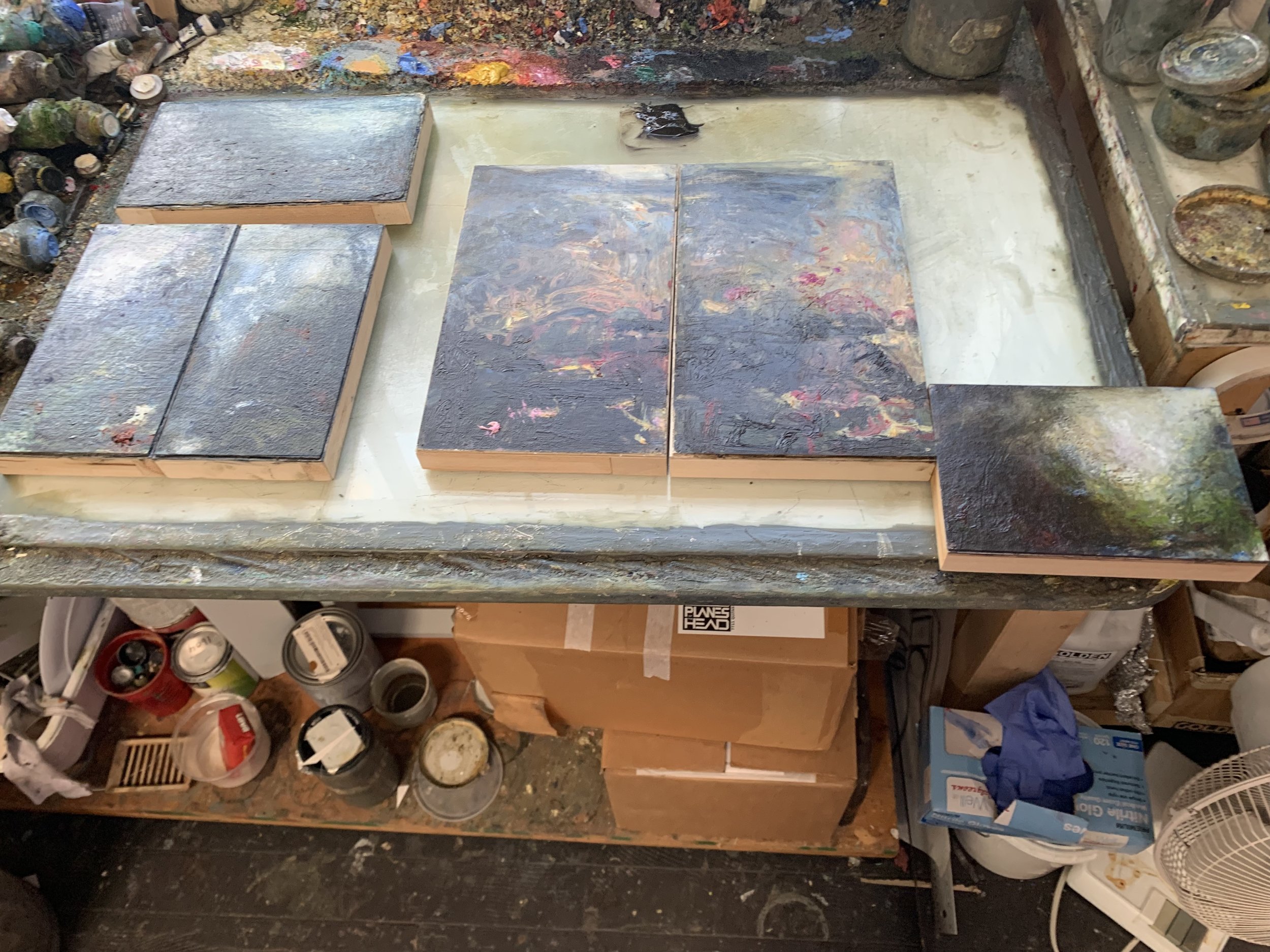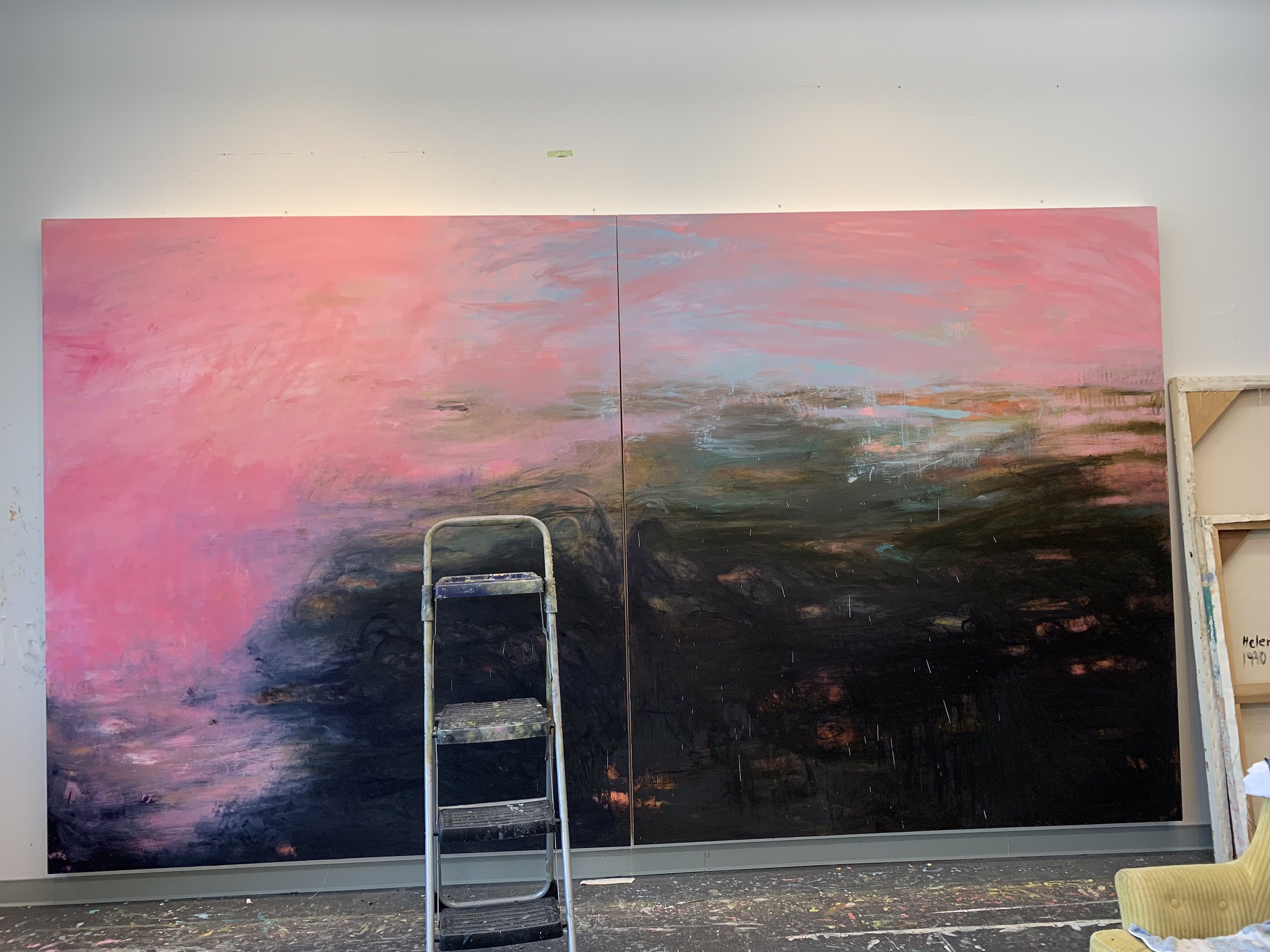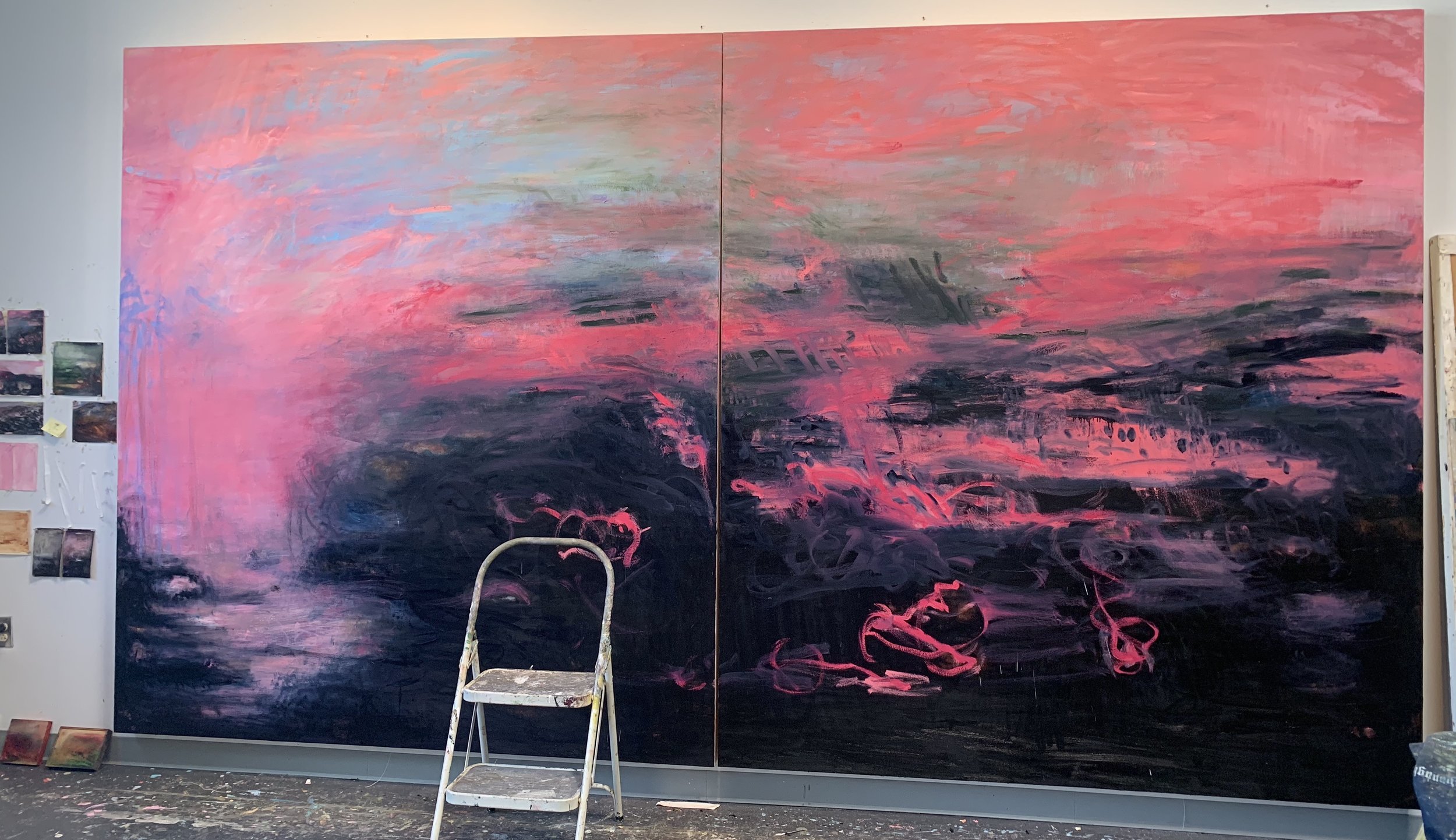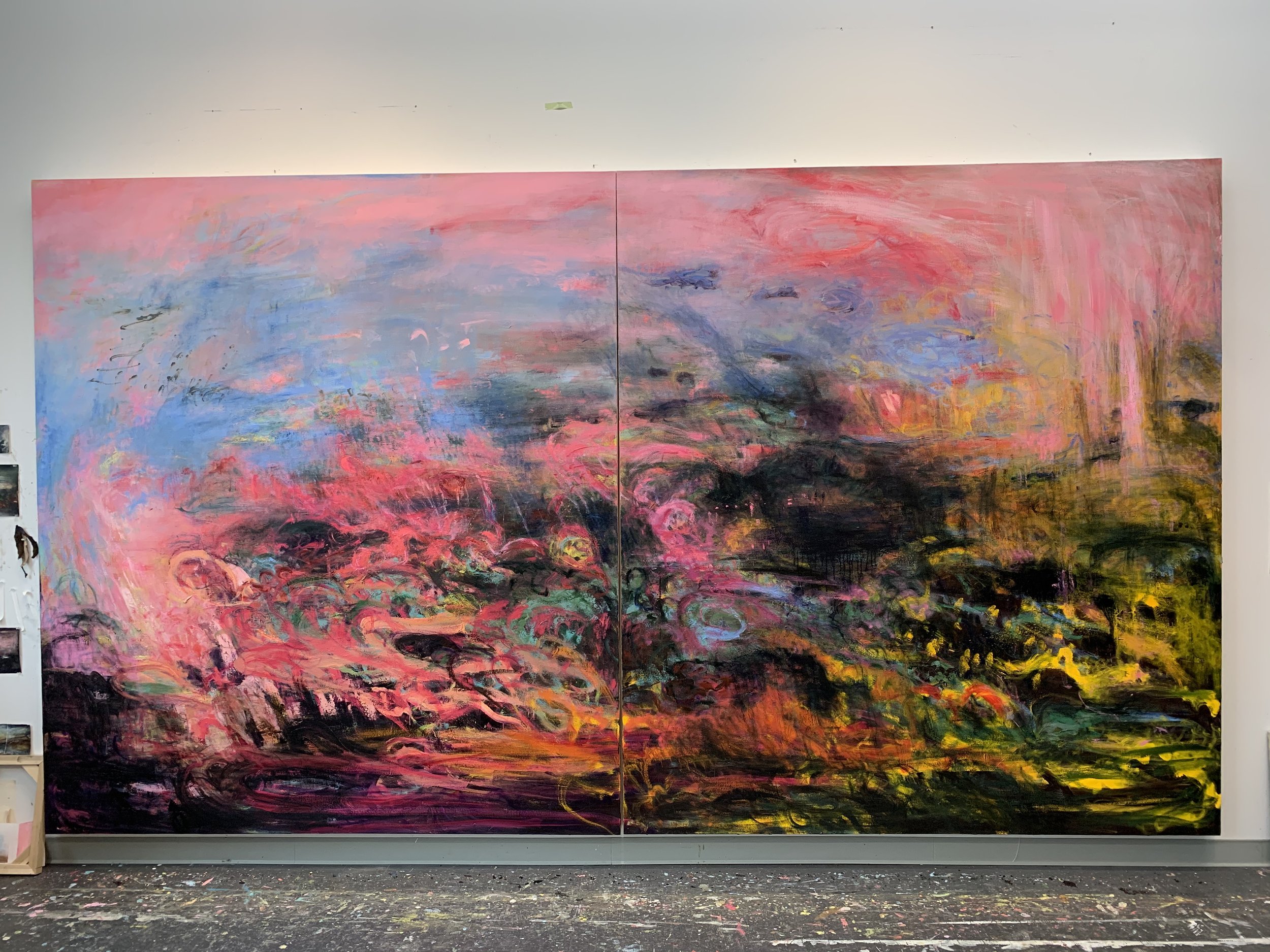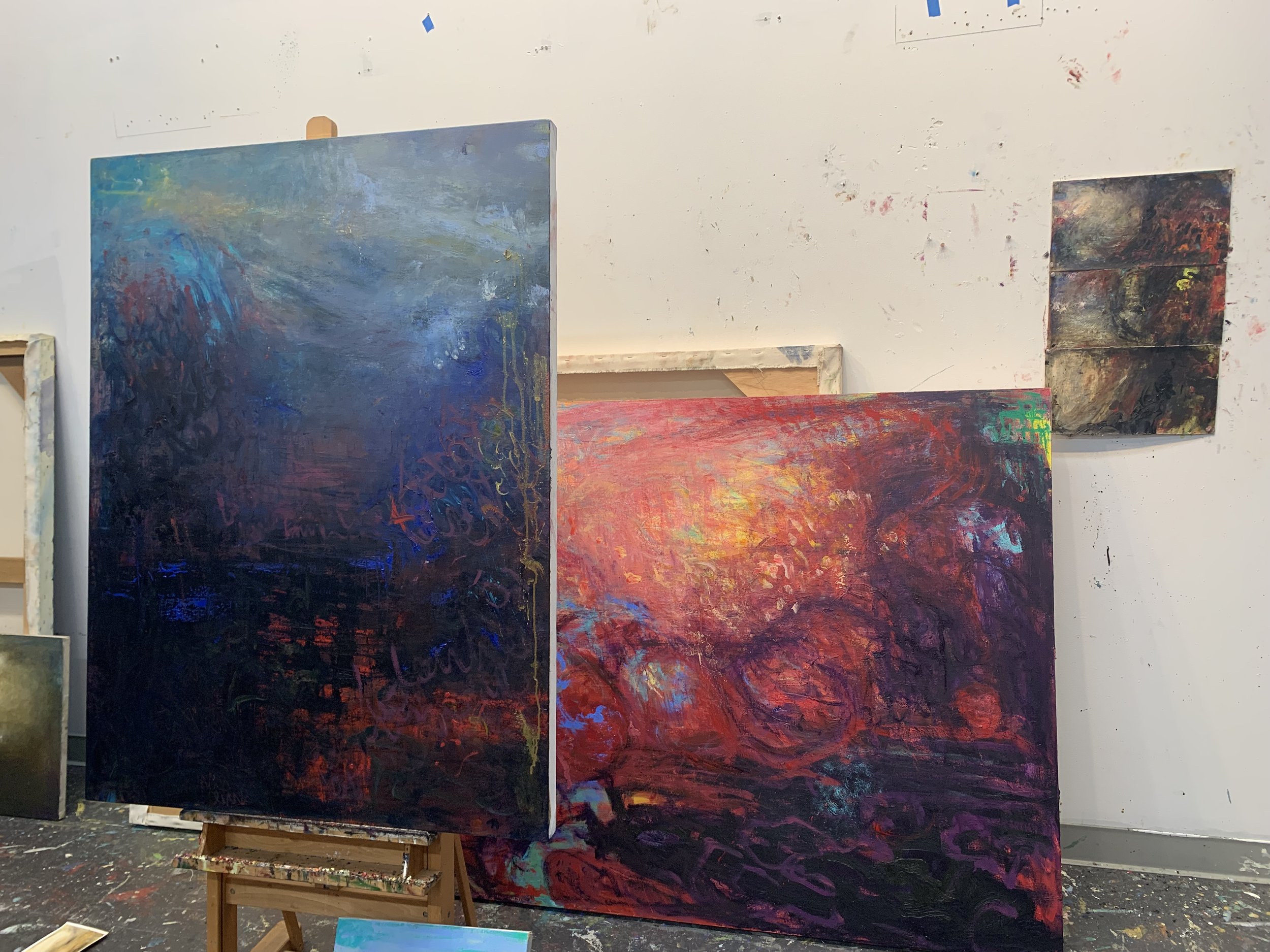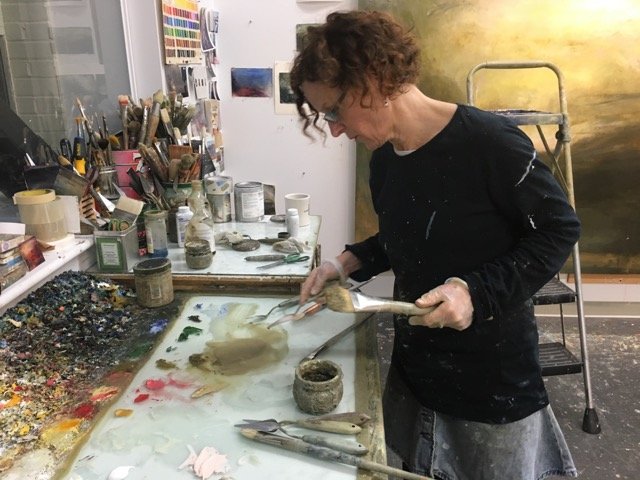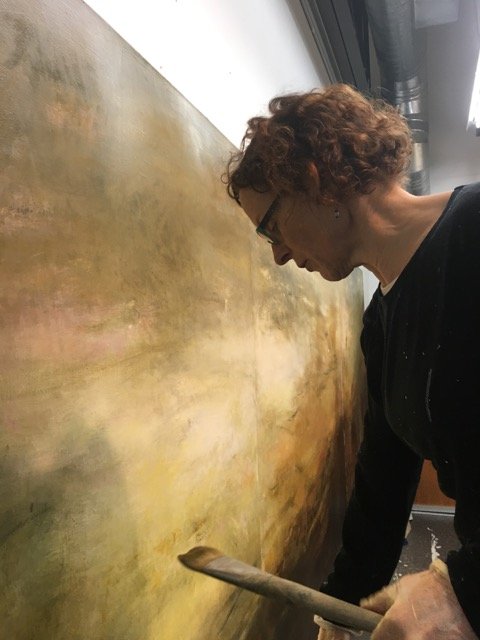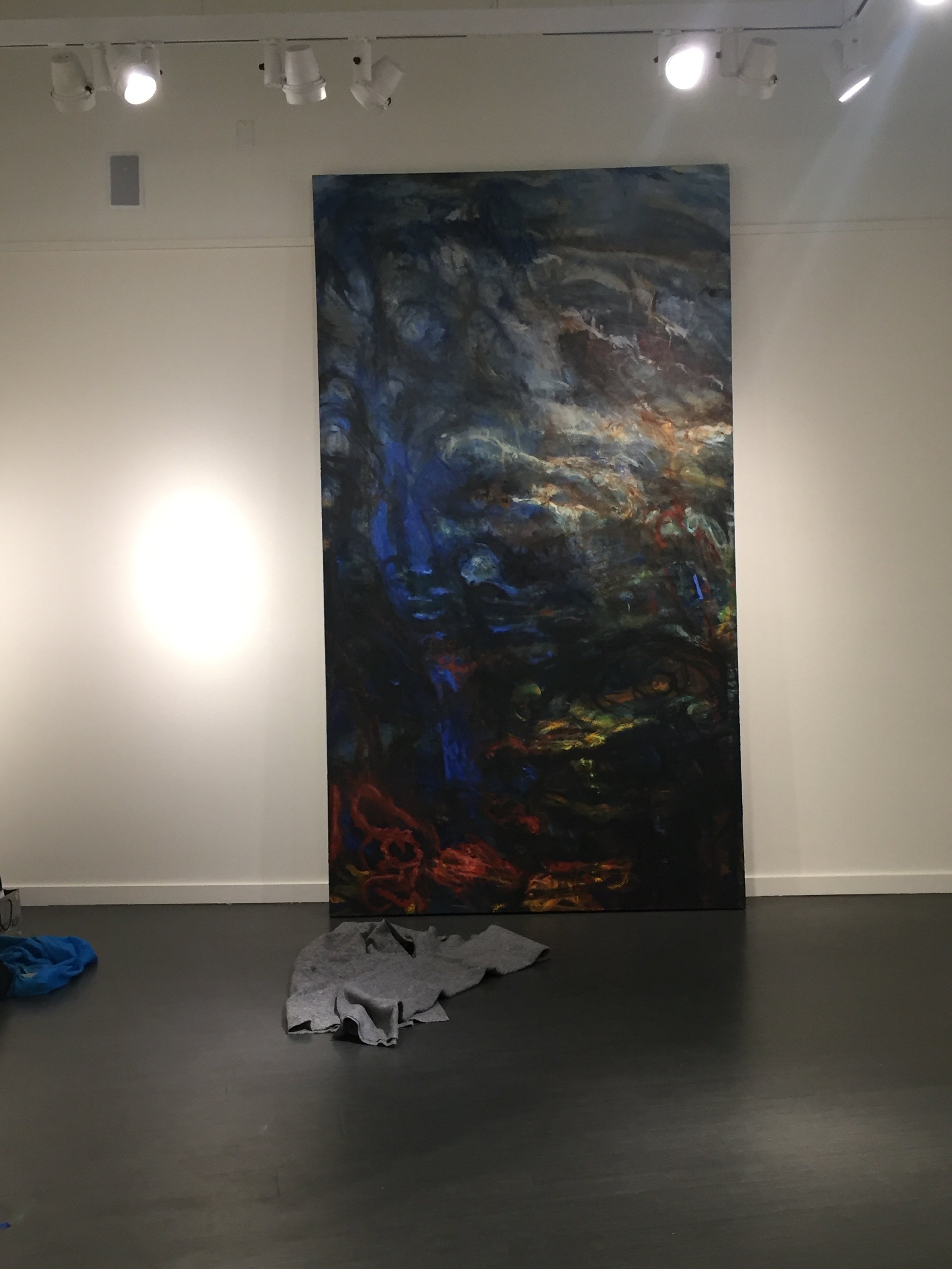I am an abstract painter. A year ago, I completed a series of paintings for an exhibition at the San Juan Islands Museum of Art, WA., (What Was: unmarked, March 3 – May 31, 2022). The paintings deal with the past and its influences on the present: control of land, unspoken stories of oppression, trauma, abuse, the church, and people I heard about or knew growing up in the West of Ireland. My new series of paintings considers the relationship between people displaced by injustices and cruelty at the hands of an oppressor.
Over the past ten years, my paintings have extended the form and conventions of history painting. Migration, 2015; Pirate Queen, 2021; and Rumor, 2022, embody these explorations. Migration concerns the ways in which Irish people were expelled from ancestral lands and dwellings and forced to migrate to other places within Ireland as a direct result of English colonization. The declaration “To Hell or Connaught!” is attributed to Oliver Cromwell, a reminder of forced migration within the country. The title of my painting Pirate Queen refers to the sixteenth-century Irish woman known colloquially as Granuaile (Grace O’Malley), whose story represents the historical and rebellious doggedness of formidable, independent women. Rumor is a more acerbic painting, both formally and conceptually. It deals with stories that permeate our Irish families and their ongoing impact over generations. The traditional purpose of history painting has been to glorify the (sometimes-fictitious) power of the church, the state, or the painting’s possessor. Instead, my paintings memorialize stories of the past. They pay tribute to the people who worked the land or were displaced by injustices and cruelties, as exemplified in my recent paintings Flesh, Cornered, 2023, and Butter, Grounds, and Goddess,
Helen O’Toole, February 2023
If you were to walk into my studio today, you would encounter huge abstract paintings, cumbersome to deal with, and obstinate when it comes to moving them. These paintings are like gawky, awkward children and like child-rearing, demanding. I work slowly and deliberately on these paintings as if tethered to my canvas, building, scratching, adding, poking, and revealing. Pirate Queen is a pivotal painting that gets at ideas I have probed for four or five years. The title relates to the sixteenth-century mythic Irish woman known as Granuaile, whose story captures my sense of a visceral relation to the land, a manifestation of something historical, powerful, cultural, and a place of trauma and hardship. Pirate Queen’s pinkish palette separates it from my earlier work and obliquely refers to a feminine notion of land and trauma – the soil as brutalized flesh. My paintings probe this covert mess of darkness and trauma, implicating the inner lives of my ancestors and their sense of place. The burnt-out big houses, the remains of famine cottages, and the limestone walls surrounding stony green fields are expressions of the stories told, marking out what’s mine and what’s yours. Land markers and erasures divulge the stains and concealment of past histories in What Was: unmarked.
I make a lot of small paintings. The work frequently starts as an idea for one of my big paintings, where I can explore color or structure or the materiality of paint uninhibited. Often, I respond to something that I have read. Working small like this, alongside the big paintings, gives me time to contemplate my next moves in the studio. The small abstract paintings are occasionally intimate, and other times they are dark and perhaps angry. The work can tend to lean towards a landscape space formally. I rarely approach this work with the same kind of seriousness as my big paintings. Instead, the work poses as a release, even a reprieve from working large. Yet, I make these small demanding paintings from my doggedness and constant dialogue with the work. Their presence in my crowded studio is different.
Helen O’Toole, February 2022
